A quick movement in front of the window, followed by a dull thud and a shock: If a bird flies against the glass pane, it often lies motionless on the floor afterwards. Even if you take safety measures against bird strikes, it can happen that a bird flies against a pane and remains unconscious in front of it. But the good news is that with simple measures you can help the animal recover.
Man-made objects can quickly become a problem for many animal species. Fish eat plastic particles, hedgehogs get caught under robotic mowers and deer become victims in road traffic.
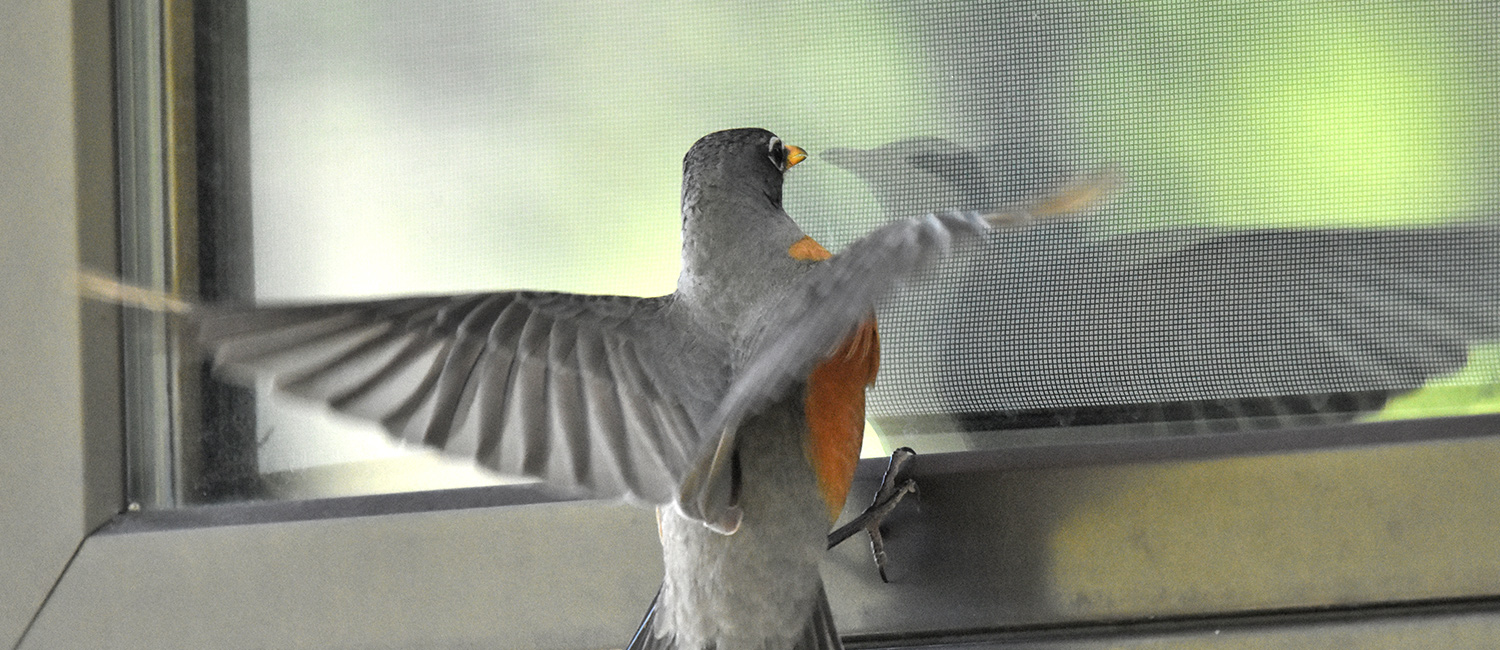
Large glass panes are a great danger for birds
For birds, glass panes in particular pose a great danger. According to NABU, around 100 million birds are killed each year in Germany alone by hitting a pane of glass. For the animals, glass is an invisible obstacle through which they believe they can fly. If plants or the blue sky are even reflected in it, this attracts the birds even more.
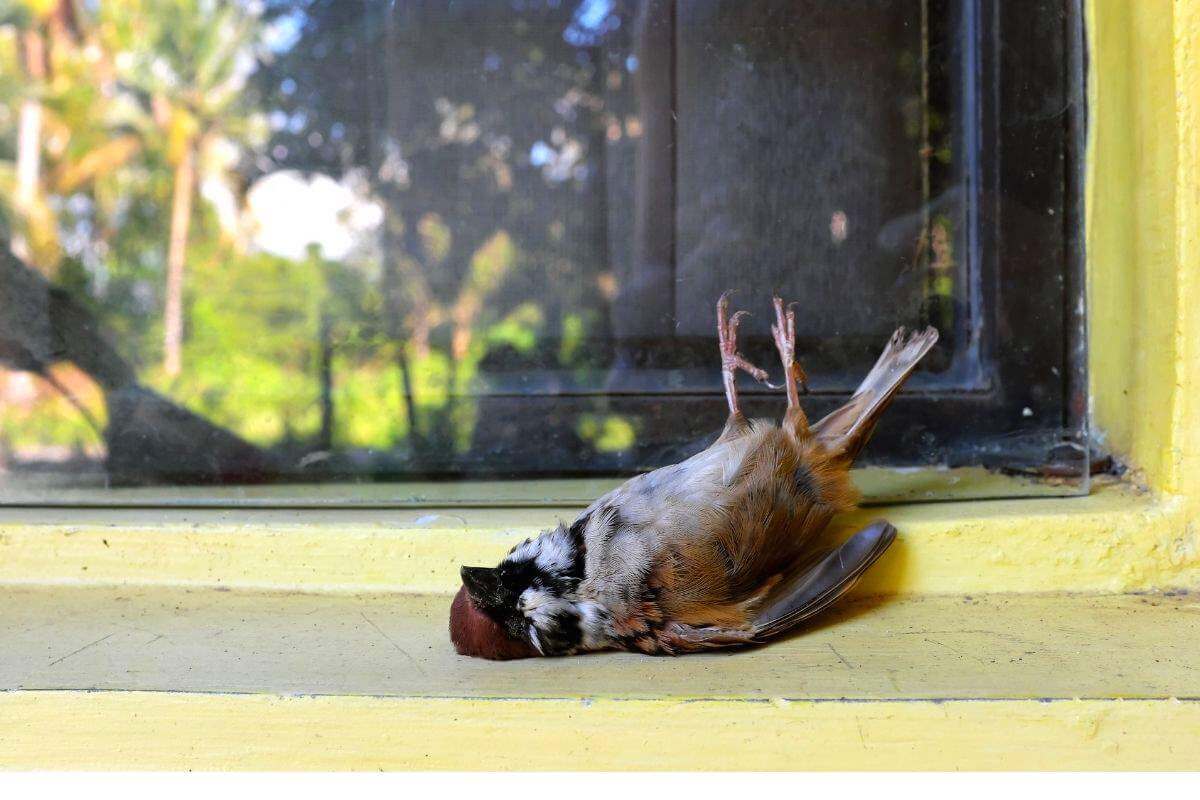
First measures: Quick examination
You can determine if the bird is still alive by examining it for signs of life. These are similar to what you would see in a human: Signs of breathing, pulse or heartbeat. Incidentally, the heart rate of birds is much higher than that of a human. You can also shine a flashlight (e.g., in a cell phone) briefly in the bird’s eye to see if the pupil reacts to the light.
The bird is still alive! Now what?
- Prepare a cardboard box by making holes in it for air and light and padding its bottom with an old towel or piece of clothing. Carefully place the bird inside and seal the box.
- If the bird is obviously injured or unable to fly, take it in the box to a veterinarian as soon as possible.
- If the bird has no visible injuries, place the sealed box in a quiet place where it will also be safe from predators such as cats.
- If the bird has recovered after about an hour and is fit enough, you can release it from the box outdoors.
- If the bird is still unconscious after two hours or has noticeably not fully recovered, it is time to contact a veterinarian.
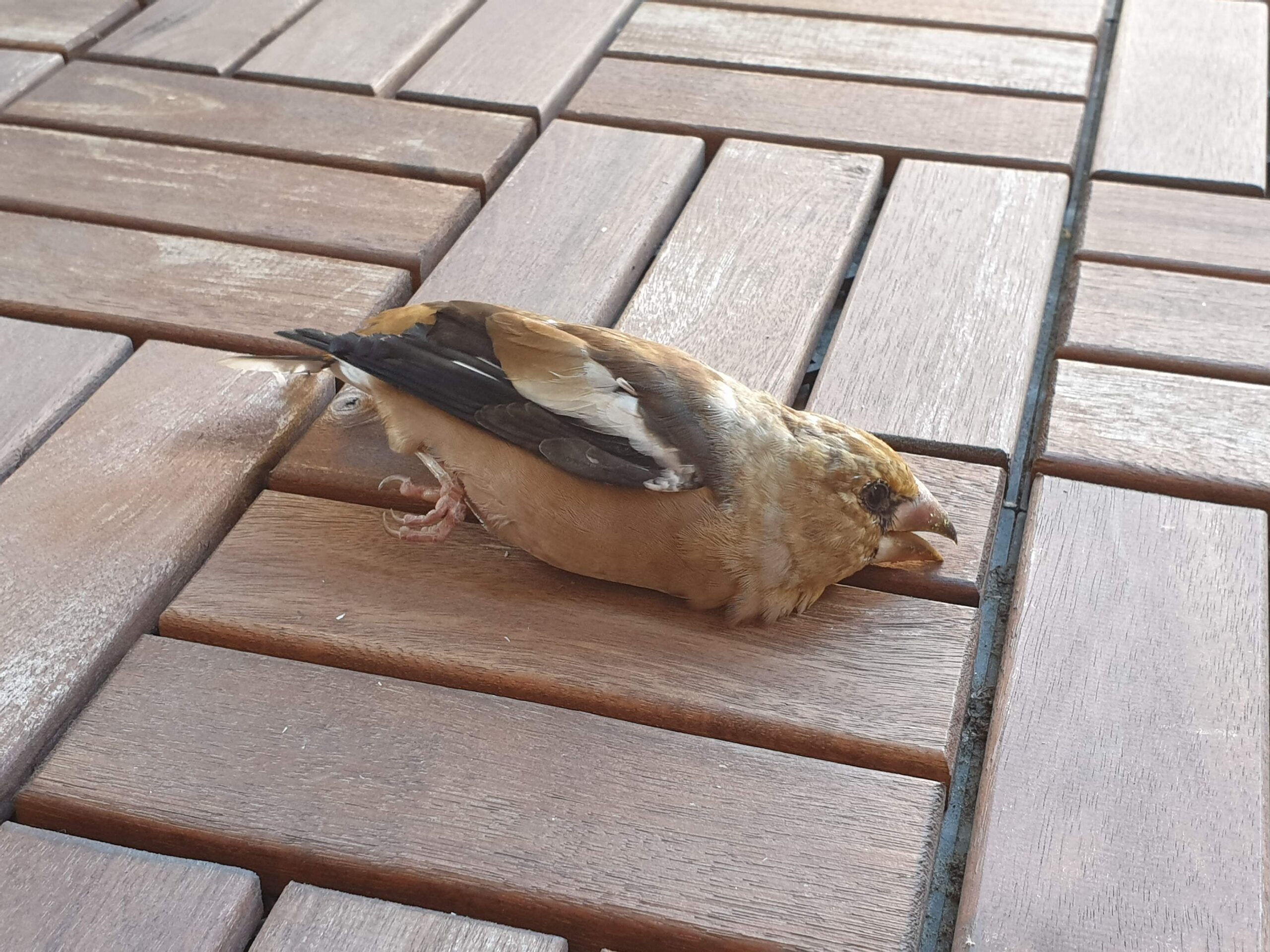
In rare cases, the birds also suffer internal bleeding, which can lead to death after several minutes to hours, so in principle prevention is always better than help. Simple aids are stickable patterns on windows (more on this later in the article).
Quick info from wildbild-rescue organisation:
- Is the bird: visibly injured, unable to fly, dazed/staggering, or unconscious?
- Dazed, staggering or fainting, otherwise uninjured: There is a high probability of concussion. The bird may die within the next hour.
pick up immediately > put in a small, padded, dark container > put in a quiet place at normal room temperature (not too warm) > leave completely undisturbed for at least 2 hours.
When the bird has completely recovered and appears top fit again (test flight ability in a manageable room with windows and mirrors suspended) > release back into the wild at the location where it was found. If the bird recovers somewhat but remains “battered” or unchanged > read explanations on concussion (they are in the link in the first part) and contact veterinarian if necessary.
- visibly injured: pick up > put in a small, padded, dark container > take to vet > nurse back to health >or find foster home
- flightless, otherwise apparently fit: there is a high probability of a strain, bruise or fracture > pick up > put in a small, padded, dark container > take to vet > nurse back to health >or look for foster home
How to make window panes safer for birds?
The quickest and cheapest method would be to simply stop cleaning the windows. The reflections in the panes would be gone and the birds would recognize them as obstacles and not fly against them.
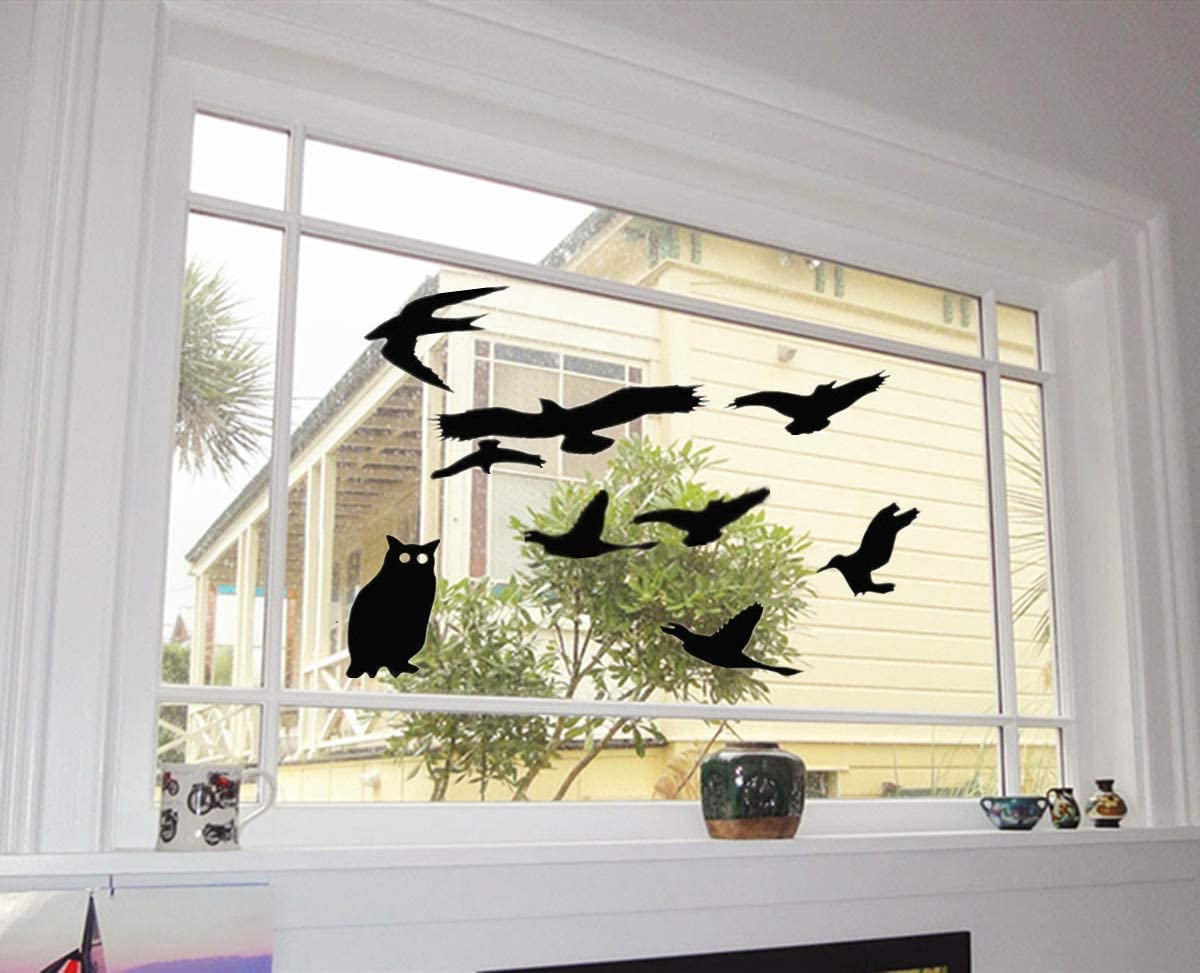
Since this method is unfortunately not very suitable for everyday use, but you can do a few things to achieve a similar effect and make the window visible to birds, without completely blocking the view outside or the incidence of light into the apartment. Suitable are stickable patterns in the form of special films or adhesive strips, which you can get for example as “Bird-Tape”. Vertical stripes or narrow dot patterns have proven themselves well. Stick-on silhouettes of birds of prey don’t really help, birds don’t see enemies in them and often fly right next to the stickers in front of the window pane – if they see the stickers at all, which is unfortunately rarely the case at dusk. Light patterns against a dark background or vice versa have proven to be particularly effective, as have all stickers in orange. Milky, i.e. semi-transparent, adhesive strips are also good.

Many small stickers are better than a few large ones, where you would have to cover already a quarter of the window pane as bird protection, with narrow stripes or dots a few percent of the glass surface are enough. It is important to stick the patterns from the outside, otherwise the reflection will not be prevented. If you don’t want to stick on your window panes, you can achieve similar but weaker effects with light-colored curtains, external or internal blinds or fly screens.
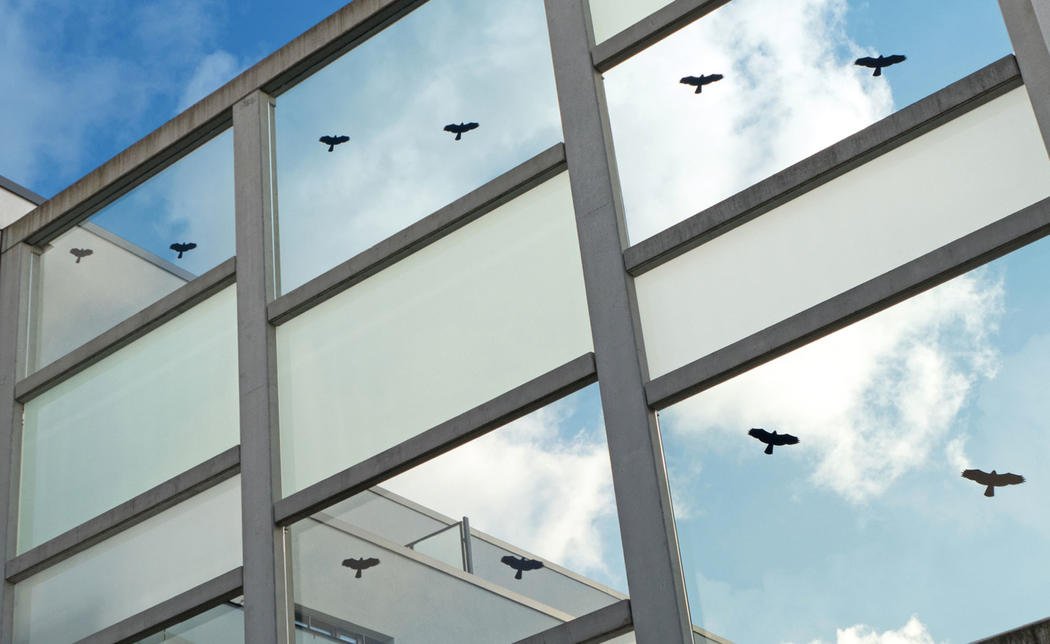
Silhouettes of birds of prey are often pasted on large glass panes to prevent birds from flying against them. But they are not really effective
So that in winter no bird flies from the birdhouse in the garden against a window pane, you should not place it near the window, even if one would like to observe the lively hustle and bustle of the animals of course preferably from the warm window. But this works just as well with binoculars from a little distance. If the birdhouse is to be placed at the window, then at least one meter away from the window pane, so that the animals do not bang against the glass at high speed in the event of a panic start.






